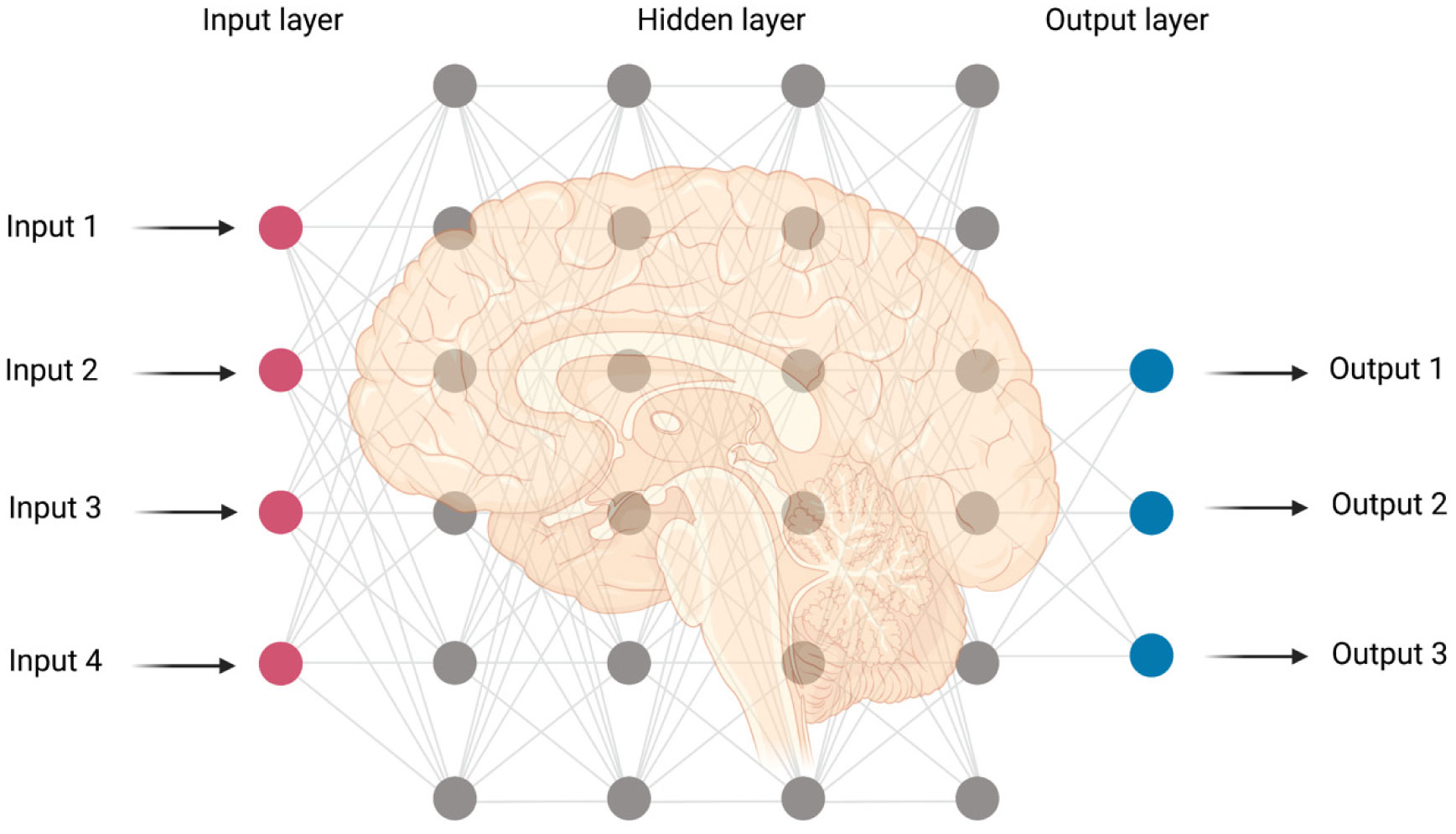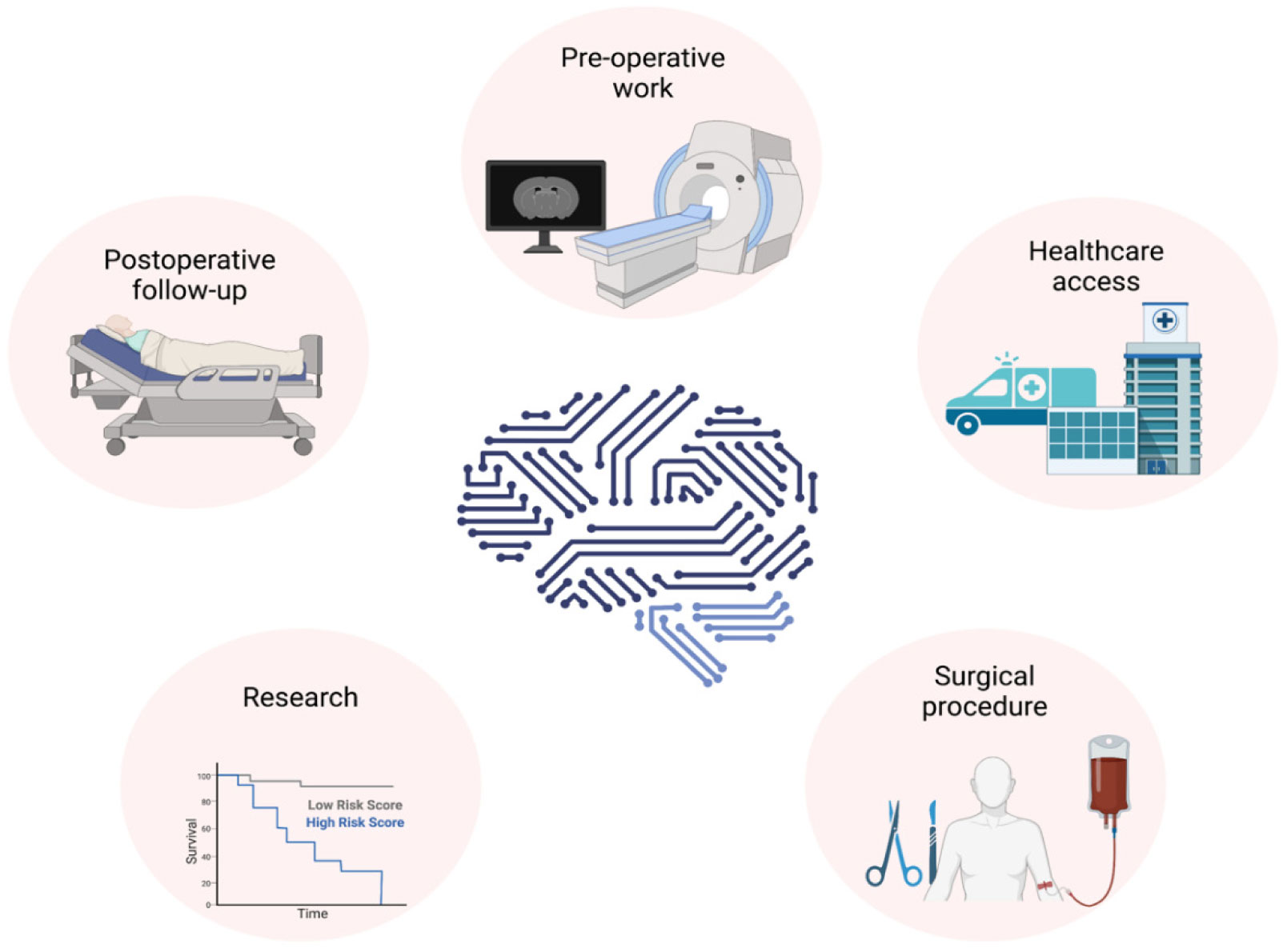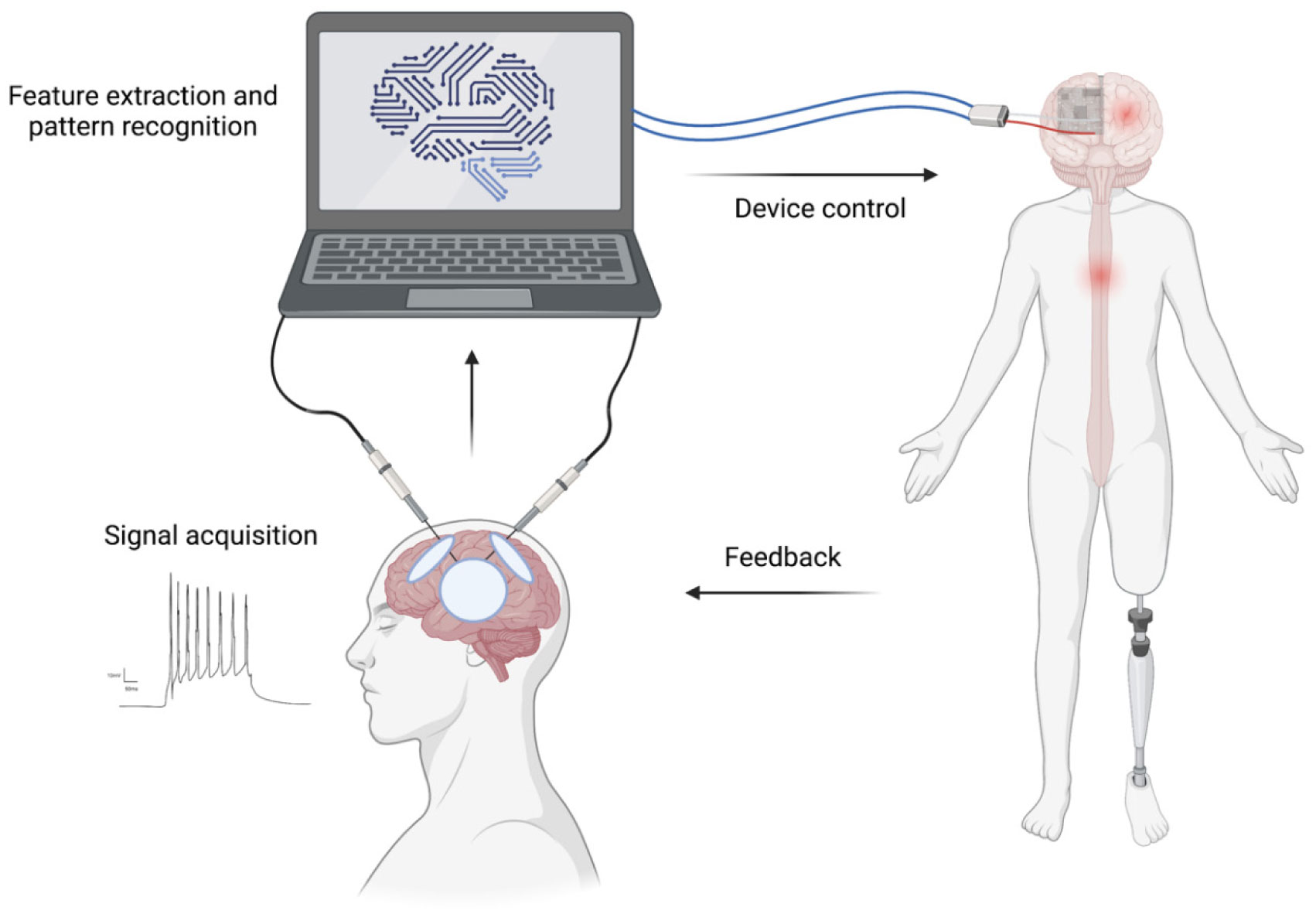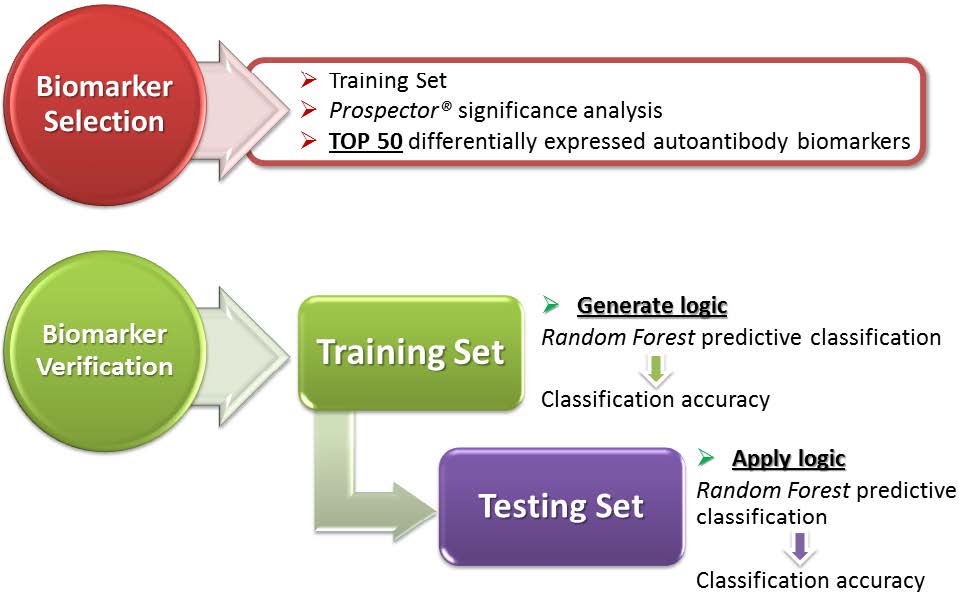| 1.
|
Mohammad Mofatteh, Mohammad Sadegh Mashayekhi, Saman Arfaie, Yimin Chen, Asfand Baig Mirza, Jawad Fares, Soham Bandyopadhyay, Edy Henich, Xuxing Liao, Mark Bernstein,
Augmented and virtual reality usage in awake craniotomy: a systematic review,
2022,
46,
1437-2320,
10.1007/s10143-022-01929-7
|
|
| 2.
|
Victor Gabriel El-Hajj, Maria Gharios, Erik Edström, Adrian Elmi-Terander,
Artificial Intelligence in Neurosurgery: A Bibliometric Analysis,
2023,
171,
18788750,
152,
10.1016/j.wneu.2022.12.087
|
|
| 3.
|
Mohamad Bydon, Sulaman Durrani, William Mualem,
Commentary: Validation of Machine Learning-Based Automated Surgical Instrument Annotation Using Publicly Available Intraoperative Video,
2022,
23,
2332-4252,
e158,
10.1227/ons.0000000000000285
|
|
| 4.
|
Wireko Andrew Awuah, Jacob Kalmanovich, Aashna Mehta, Helen Huang, Rohan Yarlagadda, Mrinmoy Kundu, Matthew Nasato, Abdul-Rahman Toufik, Precious Peculiar Olatunbosun, Arda Isik, Vladyslav Sikora,
Harnessing artificial intelligence to bridge the neurosurgery gap in low-income and middle-income countries,
2022,
0032-5473,
postgradmedj-2022-141992,
10.1136/pmj-2022-141992
|
|
| 5.
|
Javed Iqbal, Kainat Jahangir, Yusra Mashkoor, Nazia Sultana, Dalia Mehmood, Mohammad Ashraf, Ather Iqbal, Muhammad Hassan Hafeez,
The future of artificial intelligence in neurosurgery: A narrative review,
2022,
13,
2152-7806,
536,
10.25259/SNI_877_2022
|
|
| 6.
|
Pooria Sobhanian, Misagh Shafizad, Shaghayegh Karami, Fateme Mozaffari, Amirhossein Arab, Ghazal Razani, Paria Shafiekhani, Saeid Safari,
Artificial Intelligence Applications in Clinical Neurosurgery,
2022,
2,
2772-8854,
10.5812/pmco-133563
|
|
| 7.
|
Nilesh Harshit Barla, Shaeril Michael Almeida, Michael Sebastian Almeida,
2023,
Chapter 9,
978-981-19-8295-8,
199,
10.1007/978-981-19-8296-5_9
|
|
| 8.
|
Eun Kyung Jun, Sunghwan Lim, Joonho Seo, Kae Hong Lee, Jae Hee Lee, Deukhee Lee, Jae Chul Koh,
Augmented Reality-Assisted Navigation System for Transforaminal Epidural Injection,
2023,
Volume 16,
1178-7090,
921,
10.2147/JPR.S400955
|
|
| 9.
|
Caroline E. Richburg, Lesly A. Dossett, Tasha M. Hughes,
Cognitive Bias and Dissonance in Surgical Practice,
2023,
103,
00396109,
271,
10.1016/j.suc.2022.11.003
|
|
| 10.
|
Mohammad Mofatteh, Mohammad Sadegh Mashayekhi, Saman Arfaie, Amos Olufemi Adeleye, Edward Olaoluwa Jolayemi, Nathalie C. Ghomsi, Nathan A. Shlobin, Ahmed A. Morsy, Ignatius N. Esene, Tsegazeab Laeke, Ahmed K. Awad, Jason J. Labuschagne, Richard Ruan, Yared Nigusie Abebe, John Nute Jabang, Abiodun Idowu Okunlola, Umaru Barrie, Hervé Monka Lekuya, Ehanga Idi Marcel, Kantenga Dieu Merci Kabulo, Nourou Dine Adeniran Bankole, Idara J. Edem, Chibuikem A. Ikwuegbuenyi, Stephane Nguembu, Yvan Zolo, Mark Bernstein,
Awake Craniotomy in Africa: A Scoping Review of Literature and Proposed Solutions to Tackle Challenges,
2023,
Publish Ahead of Print,
0148-396X,
10.1227/neu.0000000000002453
|
|
| 11.
|
Jakub Horák, Martina Turková, J. Horák, A. Rolo, E. Dolejšová,
Using artificial intelligence as business opportunities on the market: An overview,
2023,
160,
2261-2424,
01012,
10.1051/shsconf/202316001012
|
|
| 12.
|
Mohammad Mofatteh, Mohammad Sadegh Mashayekhi, Saman Arfaie, Yimin Chen, Armaan K Malhotra, Mohammed Ali Alvi, Nicholas Sader, Violet Antonick, Mostafa Fatehi Hassanabad, Alireza Mansouri, Sunit Das, Xuxing Liao, Roger S McIntyre, Rolando Del Maestro, Gustavo Turecki, Aaron A Cohen-Gadol, Gelareh Zadeh, Keyoumars Ashkan,
Suicidal ideation and attempts in brain tumor patients and survivors: A systematic review,
2023,
5,
2632-2498,
10.1093/noajnl/vdad058
|
|
| 13.
|
Seth B. Wilson, Jacob Ward, Vikas Munjal, Chi Shing Adrian Lam, Mayur Patel, Ping Zhang, David S. Xu, Vikram B. Chakravarthy,
Machine Learning in Spine Oncology: A Narrative Review,
2024,
2192-5682,
10.1177/21925682241261342
|
|
| 14.
|
Diana T. Mosa, Amena Mahmoud, John Zaki, Shaymaa E. Sorour, Shaker El-Sappagh, Tamer Abuhmed, Sathishkumar V E,
Henry gas solubility optimization double machine learning classifier for neurosurgical patients,
2023,
18,
1932-6203,
e0285455,
10.1371/journal.pone.0285455
|
|
| 15.
|
Nathan A. Shlobin, Gail Rosseau,
Opportunities and Considerations for the Incorporation of Artificial Intelligence into Global Neurosurgery: A Generative Pretrained Transformer Chatbot-Based Approach,
2024,
186,
18788750,
e398,
10.1016/j.wneu.2024.03.149
|
|
| 16.
|
Mohamed L. Seghier,
7 T and beyond: toward a synergy between fMRI-based presurgical mapping at ultrahigh magnetic fields, AI, and robotic neurosurgery,
2024,
8,
2509-9280,
10.1186/s41747-024-00472-y
|
|
| 17.
|
Xin Li, Zhao-ying Dong, Meng Dong, Lei Chen,
Early dopaminergic replacement treatment initiation benefits motor symptoms in patients with Parkinson's disease,
2024,
18,
1662-5161,
10.3389/fnhum.2024.1325324
|
|
| 18.
|
Benjamin S. Hopkins, Michael B. Cloney, Ekamjeet S. Dhillon, Pavlos Texakalidis, Jonathan Dallas, Vincent N. Nguyen, Matthew Ordon, Najib El Tecle, Thomas C. Chen, Patrick C. Hsieh, John C. Liu, Tyler R. Koski, Nader S. Dahdaleh,
Using machine learning and big data for the prediction of venous thromboembolic events after spine surgery: A single-center retrospective analysis of multiple models on a cohort of 6869 patients,
2023,
14,
0974-8237,
221,
10.4103/jcvjs.jcvjs_69_23
|
|
| 19.
|
Kassandra Roger, Phetsamone Vannasing, Julie Tremblay, Maria L. Bringas Vega, Cyralene P. Bryce, Arielle Rabinowitz, Pedro Antonio Valdes-Sosa, Janina R. Galler, Anne Gallagher,
Early childhood malnutrition impairs adult resting brain function using near-infrared spectroscopy,
2024,
17,
1662-5161,
10.3389/fnhum.2023.1287488
|
|
| 20.
|
Inibehe Ime Okon, Aymar Akilimali, Nathan Simbarashe Chisvo, Bareq Sabeeh Al-Lami, Lorraine Arabang Sebopelo, Tolulope Judah Gbayisomore, Daniel Stephen Masunga, Agbeniga Elijah Temitope, Kwadwo Antwi Boasiako Nkansah-Poku, Emmanuel Emmanuel Edet, Okesanya Olalekan John, Samuel Chukwuebuka Ewelike, Ibrahim Muhammad Bello, Fadele Kehinde Precious, Ugwu Onyedika Mitchell, Michael Omo Erhayanmen, Don Eliseo Lucero-Prisno III,
Strengthening neurosurgical training programs in Sub-saharan Africa: a medical student’s perspective,
2024,
47,
1437-2320,
10.1007/s10143-024-02469-y
|
|
| 21.
|
Tej D. Azad, Anmol Warman, Jovanna A. Tracz, Liam P. Hughes, Brendan F. Judy, Timothy F. Witham,
Augmented reality in spine surgery – past, present, and future,
2024,
24,
15299430,
1,
10.1016/j.spinee.2023.08.015
|
|
| 22.
|
Shinya Watanabe, Yasushi Shibata, Eiichi Ishikawa,
Idiopathic Normal Pressure Hydrocephalus With Multiple Sulcus Enlargements but No Ventricular Enlargement Resembling Brain Atrophy Over a Long Period Before Diagnosis: A Case Report,
2023,
2168-8184,
10.7759/cureus.49757
|
|
| 23.
|
Shuhei Morita, Shunji Asamoto, Haruki Sawada, Kota Kojima, Takashi Arai, Nobuhiko Momozaki, Jun Muto, Takakazu Kawamata,
The Future of Sustainable Neurosurgery: Is a Moonshot Plan for Artificial Intelligence and Robot-Assisted Surgery Possible in Japan?,
2024,
192,
18788750,
15,
10.1016/j.wneu.2024.08.126
|
|
| 24.
|
Wireko Andrew Awuah, Favour Tope Adebusoye, Jack Wellington, Lian David, Abdus Salam, Amanda Leong Weng Yee, Edouard Lansiaux, Rohan Yarlagadda, Tulika Garg, Toufik Abdul-Rahman, Jacob Kalmanovich, Goshen David Miteu, Mrinmoy Kundu, Nikitina Iryna Mykolaivna,
Recent Outcomes and Challenges of Artificial Intelligence, Machine Learning, and Deep Learning in Neurosurgery,
2024,
23,
25901397,
100301,
10.1016/j.wnsx.2024.100301
|
|
| 25.
|
Sean D. Jeffries, Eric D. Pelletier, Kevin Song, Zheyan Tu, Avinash Sinha, Thomas M. Hemmerling,
Recognition of Vocal Cords During Videolaryngoscopy Based on State-of-the-Art YOLO-V8 Architecture,
2024,
0003-2999,
10.1213/ANE.0000000000007283
|
|
| 26.
|
Raivat Shah, Vanessa Reese, Martin Oselkin, Stanislaw P. Stawicki,
2023,
Chapter 10,
978-1-83768-272-0,
10.5772/intechopen.113034
|
|
| 27.
|
Daniel N. de Souza, Mitchell Jarmol, Carter A. Bell, Christina Marini, Laura J. Balcer, Steven L. Galetta, Scott N. Grossman,
Precision Concussion Management: Approaches to Quantifying Head Injury Severity and Recovery,
2023,
13,
2076-3425,
1352,
10.3390/brainsci13091352
|
|
| 28.
|
Arun Rabindra Katwaroo, Vivek Shanker Adesh, Amrita Lowtan, Srikanth Umakanthan,
The diagnostic, therapeutic, and ethical impact of artificial intelligence in modern medicine,
2024,
100,
0032-5473,
289,
10.1093/postmj/qgad135
|
|
| 29.
|
George Bcharah, Nithin Gupta, Nicholas Panico, Spencer Winspear, Austin Bagley, Morgan Turnow, Randy D'Amico, Alvan-Emeka K. Ukachukwu,
Innovations in Spine Surgery: A Narrative Review of Current Integrative Technologies,
2024,
184,
18788750,
127,
10.1016/j.wneu.2023.12.124
|
|
| 30.
|
Rohit Prem Kumar, Vijay Sivan, Hanin Bachir, Syed A. Sarwar, Francis Ruzicka, Geoffrey R. O'Malley, Paulo Lobo, Ilona Cazorla Morales, Nicholas D. Cassimatis, Jasdeep S. Hundal, Nitesh V. Patel,
Can Artificial Intelligence Mitigate Missed Diagnoses by Generating Differential Diagnoses for Neurosurgeons?,
2024,
187,
18788750,
e1083,
10.1016/j.wneu.2024.05.052
|
|
| 31.
|
Gervith Reyes Soto, Daniel Alejandro Vega-Moreno, Carlos Catillo-Rangel, Alberto González-Aguilar, Oswaldo Alan Chávez-Martínez, Vladimir Nikolenko, Renat Nurmukhametov, Andreina Rosario Rosario , Ulises García-González, Alfonso Arellano-Mata, Mario Antonio Furcal Aybar, Manuel de Jesus Encarnacion Ramirez,
Correlation of Edema/Tumor Index With Histopathological Outcomes According to the WHO Classification of Cranial Tumors,
2024,
2168-8184,
10.7759/cureus.72942
|
|
| 32.
|
Artur Fabijan, Bartosz Polis, Robert Fabijan, Krzysztof Zakrzewski, Emilia Nowosławska, Agnieszka Zawadzka-Fabijan,
Artificial Intelligence in Scoliosis Classification: An Investigation of Language-Based Models,
2023,
13,
2075-4426,
1695,
10.3390/jpm13121695
|
|
| 33.
|
Lacey Marshall, Graham Lynn, Suhrud Pathak, Keyi Liu, Manoj Govindarajulu, Arun H. S. Kumar, Hanan Fahad Alharbi, Hemalatha Selvaraj, Muralikrishnan Dhanasekaran,
2024,
Chapter 5,
978-981-97-2576-2,
87,
10.1007/978-981-97-2577-9_5
|
|
| 34.
|
K.A. Magamaev, K.A. Magamaev, K.D. Deminskaya, K.K. Kadieva, I.R. Guseinov, A.S. Zolotar, A.P. Malevanets, E.E. Meteleva, M.M. Magomedov, E.A. Alekseeva,
Application of robotic systems in neurosurgery: problems and prospects,
2024,
132,
10.18137/cardiometry.2024.31.132137
|
|
| 35.
|
Harry Robertshaw, Lennart Karstensen, Benjamin Jackson, Alejandro Granados, Thomas C. Booth,
Autonomous navigation of catheters and guidewires in mechanical thrombectomy using inverse reinforcement learning,
2024,
19,
1861-6429,
1569,
10.1007/s11548-024-03208-w
|
|
| 36.
|
Yosuke Sakai, Tetsuya Tsukada, Toru Watanabe, Yoshio Araki, Yukio Seki,
Embolization of Ruptured Aneurysms in the Intracranial Peripheral Arteries Using N-Butyl Cyanoacrylate Glue: A Case Series,
2024,
2168-8184,
10.7759/cureus.71028
|
|
| 37.
|
Tianshuo Yuan, Yingchuan Chen, Guanyu Zhu, Jianguo Zhang,
The Related Factors and Effect of Electrode Displacement on Motor Outcome of Subthalamic Nuclei Deep Brain Stimulation in Parkinson’s Disease,
2023,
12,
2077-0383,
7561,
10.3390/jcm12247561
|
|
| 38.
|
Aman Bhatia, Jessica Hanna, Tucker Stuart, Kevin Albert Kasper, David Marshall Clausen, Philipp Gutruf,
Wireless Battery-free and Fully Implantable Organ Interfaces,
2024,
124,
0009-2665,
2205,
10.1021/acs.chemrev.3c00425
|
|
| 39.
|
Yuki Kimoto, Naoki Tani, Takuto Emura, Takahiro Matsuhashi, Takuto Yamamoto, Yuya Fujita, Satoru Oshino, Koichi Hosomi, Hui Ming Khoo, Shimpei Miura, Takahiro Fujinaga, Takufumi Yanagisawa, Haruhiko Kishima,
Beta-gamma phase-amplitude coupling of scalp electroencephalography during walking preparation in Parkinson’s disease differs depending on the freezing of gait,
2024,
18,
1662-5161,
10.3389/fnhum.2024.1495272
|
|
| 40.
|
Clayton R. Baker, Matthew Pease, Daniel P. Sexton, Andrew Abumoussa, Lola B. Chambless,
Artificial intelligence innovations in neurosurgical oncology: a narrative review,
2024,
169,
0167-594X,
489,
10.1007/s11060-024-04757-5
|
|
| 41.
|
Jason M. Harley, Tiah Tawakol, Sayed Azher, Andrea Quaiattini, Rolando Del Maestro,
The role of artificial intelligence, performance metrics, and virtual reality in neurosurgical education: an umbrella review,
2024,
3,
2731-4588,
10.1007/s44186-024-00284-z
|
|
| 42.
|
Shobha Mandal, Subhadeep Chakraborty, Muhammad Ayaz Tariq, Kamran Ali, Zenia Elavia, Misbah Kamal Khan, Diana Baltodano Garcia, Sofia Ali, Jubran Al Hooti, Divyanshi Vijay Kumar,
Artificial Intelligence and Deep Learning in Revolutionizing Brain Tumor Diagnosis and Treatment: A Narrative Review,
2024,
2168-8184,
10.7759/cureus.66157
|
|
| 43.
|
Khushi Saigal, Anmol Bharat Patel, Brandon Lucke-Wold,
Artificial Intelligence and Neurosurgery: Tracking Antiplatelet Response Patterns for Endovascular Intervention,
2023,
59,
1648-9144,
1714,
10.3390/medicina59101714
|
|
| 44.
|
Gaurav Mittal, Mayur Wanjari, Roshan Prasad, Tanisha Rathi, Tangmi Djabo Eric Adrien,
Addressing gaps in neurosurgical training: a perspective on enhancing educational approaches,
2024,
47,
1437-2320,
10.1007/s10143-024-02854-7
|
|
| 45.
|
Mert Marcel Dagli, Felix Conrad Oettl, Jaskeerat Gujral, Kashish Malhotra, Yohannes Ghenbot, Jang W Yoon, Ali K Ozturk, William C Welch,
Clinical Accuracy, Relevance, Clarity, and Emotional Sensitivity of Large Language Models to Surgical Patient Questions: Cross-Sectional Study,
2024,
8,
2561-326X,
e56165,
10.2196/56165
|
|
| 46.
|
Marek Binder, Julia Papiernik, Inga Griskova-Bulanova, Sandra Frycz, Bartłomiej Chojnacki, Urszula Górska-Klimowska,
Diagnosing awareness in disorders of consciousness with gamma-band auditory responses,
2024,
17,
1662-5161,
10.3389/fnhum.2023.1243051
|
|
| 47.
|
Patricia Mae P. Limliman, Aryan Saphira B. Macua, Mary Clare Therese B. Solomon, John Raphael Y. Yu, Elmer P. Dadios, Ryan Rhay P. Vicerra, Argel B. Bandala, Ira C. Valenzuela,
2023,
Global Neurobotics: Integration of Artificial Intelligence and Robotics in Neurosurgical Procedures in Improved Diagnosis and Treatment,
979-8-3503-8117-7,
1,
10.1109/HNICEM60674.2023.10589239
|
|
| 48.
|
Mohammad Mofatteh, Mohammad Sadegh Mashayekhi, Saman Arfaie, Hongquan Wei, Arshia Kazerouni, Georgios P. Skandalakis, Ahmad Pour-Rashidi, Abed Baiad, Lior Elkaim, Jack Lam, Paolo Palmisciano, Xiumei Su, Xuxing Liao, Sunit Das, Keyoumars Ashkan, Aaron A. Cohen-Gadol,
Awake craniotomy during pregnancy: A systematic review of the published literature,
2023,
46,
1437-2320,
10.1007/s10143-023-02187-x
|
|
| 49.
|
Liping Qi, Guo-Liang Wang, Zhi-Hao Tian, Shuo Guan, Shu-Ye Yang, Yu-Long Yang, Li-Qing Liu, Yong-Zhong Lin,
Prefrontal cortical hemodynamics and functional network organization during Tai Chi standing meditation: an fNIRS study,
2023,
17,
1662-5161,
10.3389/fnhum.2023.1294312
|
|
| 50.
|
Seth M. Meade, Sebastian Salas-Vega, Matthew R. Nagy, Swetha J. Sundar, Michael P. Steinmetz, Edward C. Benzel, Ghaith Habboub,
A Pilot Remote Curriculum to Enhance Resident and Medical Student Understanding of Machine Learning in Healthcare,
2023,
180,
18788750,
e142,
10.1016/j.wneu.2023.09.012
|
|
| 51.
|
Eric Suero Molina, Antonio Di Ieva,
2024,
Chapter 16,
978-3-031-64891-5,
265,
10.1007/978-3-031-64892-2_16
|
|
| 52.
|
Corina Tamas, Flaviu Tamas, Attila Kovecsi, Georgiana Serban, Cristian Boeriu, Adrian Balasa,
The Role of Ketone Bodies in Treatment Individualization of Glioblastoma Patients,
2023,
13,
2076-3425,
1307,
10.3390/brainsci13091307
|
|
| 53.
|
Maria José Uparela-Reyes, Lina María Villegas-Trujillo, Jorge Cespedes, Miguel Velásquez-Vera, Andrés M. Rubiano,
Usefulness of Artificial Intelligence in Traumatic Brain Injury: A Bibliometric Analysis and Mini-review,
2024,
188,
18788750,
83,
10.1016/j.wneu.2024.05.065
|
|
| 54.
|
Kimia Kazemzadeh, Meisam Akhlaghdoust, Alireza Zali,
Advances in artificial intelligence, robotics, augmented and virtual reality in neurosurgery,
2023,
10,
2296-875X,
10.3389/fsurg.2023.1241923
|
|
| 55.
|
Yuan Wu, Qian Zhang, Yutong Deng, Xiang Ding, Han Xie, Shuang Wang, Chang Liu, Ming Li, Lixin Cai, Yuwu Jiang,
Impact of epilepsy surgery on developmental trajectories of children under 3 years of age,
2024,
66,
0012-1622,
1215,
10.1111/dmcn.15873
|
|
| 56.
|
Aaron Lawson McLean,
Non-fungible token integration in neurosurgery: a technical review,
2023,
46,
1437-2320,
10.1007/s10143-023-02119-9
|
|
| 57.
|
Rani G. Ahmad,
Artificial intelligence and machine learning in neurosurgery: A review of diagnostic significance and treatment planning efficiency,
2023,
30,
1115-3474,
29,
10.4103/wajr.wajr_32_22
|
|
| 58.
|
Clara F. Weber, Evelyn M. R. Lake, Stefan P. Haider, Ali Mozayan, Pratheek S. Bobba, Pratik Mukherjee, Dustin Scheinost, Robert T. Constable, Laura Ment, Seyedmehdi Payabvash,
Autism spectrum disorder-specific changes in white matter connectome edge density based on functionally defined nodes,
2023,
17,
1662-453X,
10.3389/fnins.2023.1285396
|
|
| 59.
|
Miranda X. Morris, Davide Fiocco, Tommaso Caneva, Paris Yiapanis, Dennis P. Orgill,
Current and future applications of artificial intelligence in surgery: implications for clinical practice and research,
2024,
11,
2296-875X,
10.3389/fsurg.2024.1393898
|
|
| 60.
|
Avi A. Gajjar, Rohit Prem Kumar, Ethan D. Paliwoda, Cathleen C. Kuo, Samuel Adida, Andrew D. Legarreta, Hansen Deng, Sharath Kumar Anand, D. Kojo Hamilton, Thomas J. Buell, Nitin Agarwal, Peter C. Gerszten, Joseph S. Hudson,
Usefulness and Accuracy of Artificial Intelligence Chatbot Responses to Patient Questions for Neurosurgical Procedures,
2024,
0148-396X,
10.1227/neu.0000000000002856
|
|
| 61.
|
Masood Rashid,
Artificial Intelligence in Surgery: Transforming the Future of Operative Care,
2024,
1,
3007-2794,
1,
10.69750/dmls.01.03.034
|
|
| 62.
|
Akshaya Narayan Shetti, Bhaskaran Ashokan, Mangesh Hivre, Rachita G Mustilwar, Krishan Kant,
From scalpels to algorithms: The next step in surgical advancement,
2023,
10,
2394-2789,
61,
10.18231/j.ijpca.2023.012
|
|
| 63.
|
Harry Robertshaw, Lennart Karstensen, Benjamin Jackson, Hadi Sadati, Kawal Rhode, Sebastien Ourselin, Alejandro Granados, Thomas C. Booth,
Artificial intelligence in the autonomous navigation of endovascular interventions: a systematic review,
2023,
17,
1662-5161,
10.3389/fnhum.2023.1239374
|
|
| 64.
|
Nadya Zaragita, Stefano Zhou, Setyo Widi Nugroho, Chandrasekaran Kaliaperumal,
Breaking boundaries in neurosurgery through art and technology: A historical perspective,
2024,
4,
27725294,
102836,
10.1016/j.bas.2024.102836
|
|
| 65.
|
Sagar Jolly, Shashank Paliwal, Aditya Gadepalli, Sheena Chaudhary, Hemant Bhagat, Rafi Avitsian,
Designing Enhanced Recovery After Surgery Protocols in Neurosurgery: A Contemporary Narrative Review,
2024,
36,
0898-4921,
201,
10.1097/ANA.0000000000000946
|
|
| 66.
|
Leiyi Gao, Jiao Li, Ruixin Zhang, Hailu Hanna Bekele, Junzhu Wang, Yining Cheng, Hongxia Deng,
MMGan: a multimodal MR brain tumor image segmentation method,
2023,
17,
1662-5161,
10.3389/fnhum.2023.1275795
|
|
| 67.
|
Mohammad Mofatteh, Mohammad Sadegh Mashayekhi, Saman Arfaie, Yimin Chen, Armaan K. Malhotra, Georgios P. Skandalakis, Mohammed Ali Alvi, Fardad T. Afshari, Shakila Meshkat, Famu Lin, Ebtesam Abdulla, Ayush Anand, Xuxing Liao, Roger S. McIntyre, Carlo Santaguida, Michael H. Weber, Michael G. Fehlings,
Anxiety and Depression in Pediatric-Onset Traumatic Spinal Cord Injury: A Systematic Review,
2024,
184,
18788750,
267,
10.1016/j.wneu.2023.12.092
|
|
| 68.
|
Jun Li, Jiansheng Zhong, Ziqi Li, Yong Xiao, Shousen Wang,
Ectopic Pituitary Neuroendocrine Tumor: A Case Report Written With the Help of ChatGPT,
2023,
2168-8184,
10.7759/cureus.46999
|
|
| 69.
|
Mohammad Mofatteh,
Examining the association between traumatic brain injury and headache,
2021,
20,
0219-6352,
10.31083/j.jin2004109
|
|
| 70.
|
Sahin Hanalioglu, Siyar Bahadir, Ahmet C. Ozak, Kivanc Yangi, Giancarlo Mignucci-Jiménez, Muhammet Enes Gurses, Alberto Fuentes, Ethan Mathew, Dakota T. Graham, Muhammed Yakup Altug, Egemen Gok, Gregory H. Turner, Michael T. Lawton, Mark C. Preul,
Ultrahigh-resolution 7-Tesla anatomic magnetic resonance imaging and diffusion tensor imaging of ex vivo formalin-fixed human brainstem-cerebellum complex,
2024,
18,
1662-5161,
10.3389/fnhum.2024.1484431
|
|
| 71.
|
Jhon E. Bocanegra-Becerra, Julia Sader Neves Ferreira, Gabriel Simoni, Anthony Hong, Wagner Rios-Garcia, Mohammad Mirahmadi Eraghi, Adriam M. Castilla-Encinas, Jhair Alejandro Colan, Rolando Rojas-Apaza, Emanuel Eduardo Franco Pariasca Trevejo, Raphael Bertani, Miguel Angel Lopez-Gonzalez,
Machine Learning Algorithms for Neurosurgical Preoperative Planning: A Comprehensive Scoping Review,
2024,
18788750,
10.1016/j.wneu.2024.11.048
|
|
| 72.
|
Nehaar Nimmagadda, Edouard Aboian, Sharon Kiang, Uwe Fischer,
The Role of Artificial Intelligence in Vascular Care,
2024,
29499127,
100179,
10.1016/j.jvsvi.2024.100179
|
|
| 73.
|
Abdulsalam M. Aleid, Khalid M. Alshuqayfi, Shahad Alshehri, Maqbel Almajnooni, Almorgl Z. Mohammed, Raghad A. Aljohani, Abdulmajeed A. Aljabr, Sami F. Almalki, Saud N. Aldanyowi,
Assessing Patient Preferences and Decision-making Factors in Elective Neurosurgical Procedures: A Cross-sectional Study,
2024,
1,
3050-807X,
667,
10.4103/ATMR.ATMR_132_24
|
|
| 74.
|
Ryohei Saito, Eijiro Onishi, Sadaki Mitsuzawa, Satoshi Ota, Hisataka Takeuchi, Yoshihiro Tsukamoto, Shinnosuke Yamashita, Daiki Sako, Tadashi Yasuda,
Association Between Trauma-Induced Vertebral Fractures and Motor Weakness in Patients With Diffuse Idiopathic Skeletal Hyperostosis,
2024,
2168-8184,
10.7759/cureus.76403
|
|
| 75.
|
Seelora Sahu, Nidhi Panda, Amlan Swain, Hemant Bhagat, Shalvi Mahajan,
Assessment of the Accuracy of Ultrasonographically Measured Optic Nerve Sheath Diameter as a Surrogate for the Detection of Intracranial Hypertension Compared to Optic Nerve Sheath Diameter Measured by MRI: A Prospective Observational Study,
2024,
2168-8184,
10.7759/cureus.76655
|
|
| 76.
|
Morteza Fattahi, Milad Esmaeil-Zadeh, Hamid Soltanian-Zadeh, Reza Rostami, Jamil Mansouri, Gholam-Ali Hossein-Zadeh,
Classification of female MDD patients with and without suicidal ideation using resting-state functional magnetic resonance imaging and machine learning,
2025,
18,
1662-5161,
10.3389/fnhum.2024.1427532
|
|
| 77.
|
Zhisen Li, Xiaoxia Hou, Yanli Lu, Huimin Zhao, Meixia Wang, Qian Gui, Guanhui Wu, Qinrong Xu, Xiaofeng Dong, Qingzhang Cheng, Xiaowen Xu, Hongxuan Feng,
Functional MRI study of neurovascular coupling in patients with non-lesional epilepsy,
2025,
18,
1662-5161,
10.3389/fnhum.2024.1517565
|
|
| 78.
|
Takeshi Umebayashi, Yasukazu Hijikata, Takaoki Kimura, Nahoko Kikuchi, Takeshi Hara, Keiichi Tsuda, Shinji Kumamoto, Daichi Kawamura,
Efficacy of Navigation Systems With Smart Delivery Tools in Enhancing the Accuracy of Percutaneous Pedicle Screw Insertion ,
2025,
2168-8184,
10.7759/cureus.78656
|
|
| 79.
|
Muhammad Mohsin khan, Gianluca Scalia, Noman Shah, Giuseppe Emmanuele Umana, Vishal Chavda, Bipin Chaurasia,
Ethical Concerns of AI in Neurosurgery: A Systematic Review,
2025,
15,
2162-3279,
10.1002/brb3.70333
|
|
| 80.
|
Aishwarya Gadwal, Maria Gabriela Cerdas, Areej Khan, Zainab Khan, Di Carluccio Martina , Sai Priya Nimmagadda, Syed Mustafa Ali Rizvi, Sara Mahmood Aljallawi, Shelly Jaryal, Nuren Tasgaonkar, Adnan Ahmed, Sowmika Reddy Busireddy,
The Role of Artificial Intelligence in the Diagnosis and Management of Non-convulsive Seizures: A Narrative Review,
2025,
2168-8184,
10.7759/cureus.79409
|
|
| 81.
|
Abdallah Abbas, Mohamed Abouzid, Haneen Sabet, Ahmed Mansour, Abdelfattah Arafa, Ahmed Elshahat, Ahmed Mostafa Amin, Mahmoud Tarek Hefnawy, Mohamed El-Moslemani, Amna Hussein, Mostafa Hossam El Din Moawad, Shereen M. Olama, Ahmed Badry Shehata, Mahmoud G. A. Saleh, Ahmad Farag Ibrahim El-Adawy, Ahmed M. Raslan, Mostafa Meshref,
Cerebellar transcranial magnetic stimulation in essential tremor: a systematic review and meta-analysis of safety and efficacy,
2025,
0300-9009,
10.1007/s13760-025-02740-z
|
|
| 82.
|
Sijie Zhou, Mohammad Mofatteh, Zhikai Chen, Jinyan Tang, Jicai Ma, Ziqi Ouyang, Jian Wang, Senrong Luo, Yuankang He, Zhenzhang Li, Yuzheng Lai, Xuxing Liao,
Predictive outcome of late window ischemic stroke patients following endovascular therapy: a multi-center study,
2025,
16,
1664-2295,
10.3389/fneur.2025.1489714
|
|
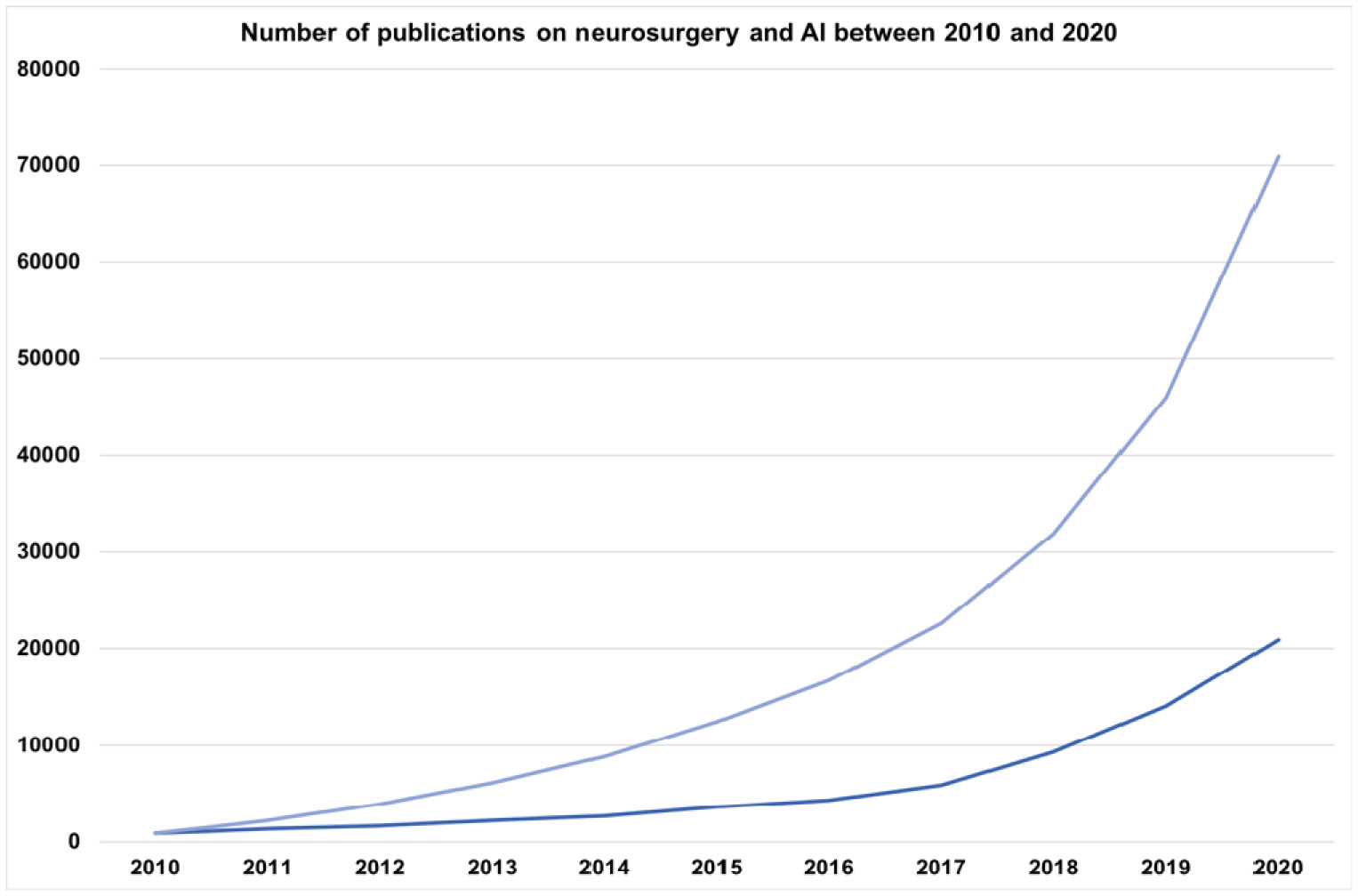









 DownLoad:
DownLoad:

